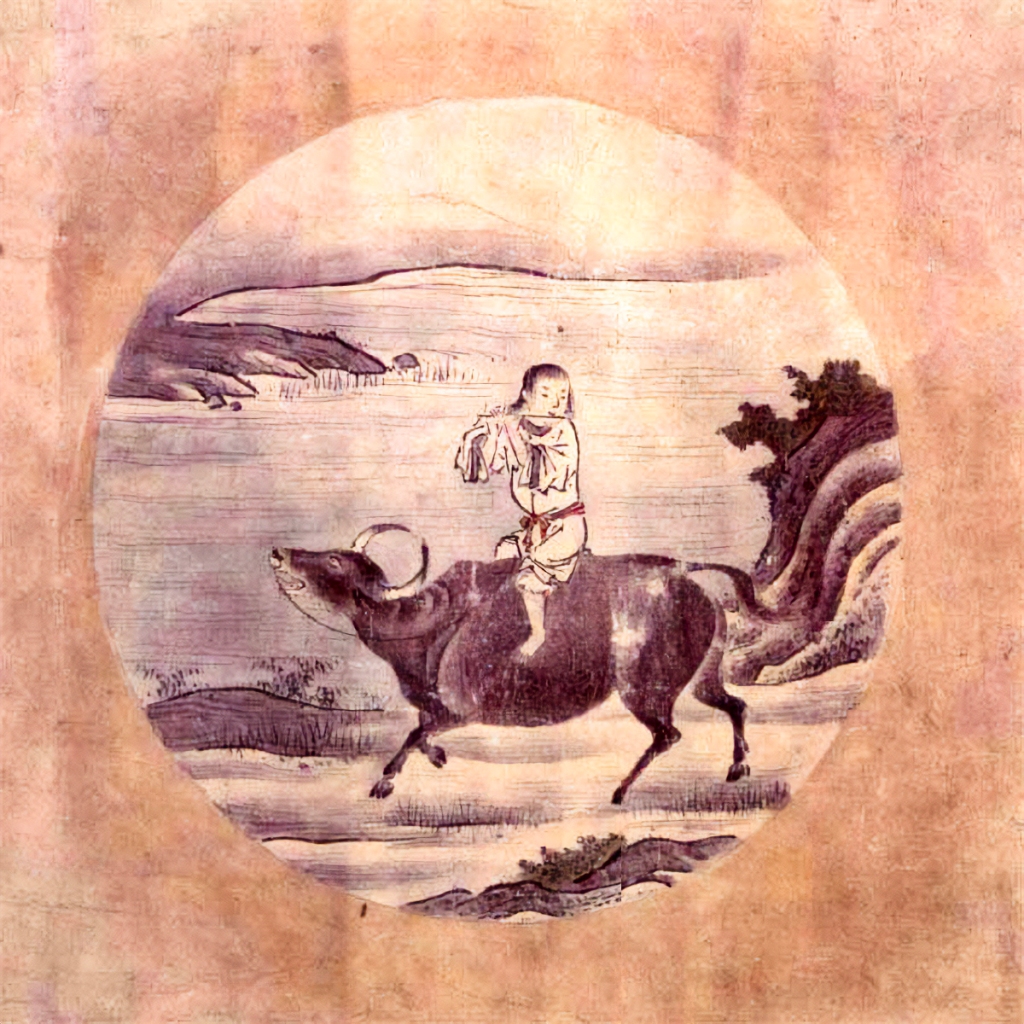Zen is sometimes called the “anti-philosophy.” Rather than shaping our ideas, it seeks to dissipate them, to allow a direct experience of reality. ¹
Inner musings can often reflect a resistance to change, which is the root of suffering according to Zen teaching. Our sense of well being attaches to the way things are – a status which is inevitably ephemeral. ²
Losing this fixation on constancy means accepting what comes without judgment. The Zen swordsman Takuan Sōhō tells us that if our focus lingers on the katana just parried, we will be too late to meet the thrust which is coming three parries from now. He counsels to let go of all things as they come and go. When a person is present with an empty mind, reaction to an antagonist occurs without reflection, but by natural reflex. If we pause to consider what has just happened, we have lost. ³
To empty the mind of such distraction, it can be filled with “nothing.”
The most ubiquitous kōan (followed by “What is the sound of one hand clapping?”) is “Do dogs have Buddha nature?” To which teacher Jōshū replied twice (differently each time, because the students who asked were in differing stages of their practice).
Jōshū’s first response was simply “Mu – 無.” ⁴ “Mu” has come to mean “nothing.” The purpose of both zazen (seated) and kinhin (walking) meditation is to empty the mind by filling it with Mu.
New Zen students are often introduced to an ox metaphor – in which “seeing the ox” is the moment one begins to understand the meaning of Mu.
The legend of the ox was first painted in a series of five or six images in the 11th century, which were later expanded to ten by Seikyo and Kakuan in the 12th century. The originals are lost, but Kakuan’s interpretations were copied (by Tenshō Shūbun) in the mid-1400’s and survived into the 1930’s in Kyoto. ⁵ It is these images which we know today.
“Accepting the idea of an ox” is depicted in the first painting. Spotting the animal’s tracks is next. Seeing the ox (experiencing enlightenment) is the third depiction, and so on. By the seventh image the ox is gone (enlightenment is the final delusion) ⁶ but returns for the eighth as the human and ox have become one (there is no longer “I/not I,” but only the world with us in it). In the ninth painting, the practitioner has made a habit of living in the present, without attachment, stripped of the filters of a chattering mind. The tenth and last mural portrays an elder entering the marketplace. This expresses the sharing of wisdom with others.
Kakuan painted 10 pictures, and perhaps it is up to us to paint an 11th – the coda representing our individual Zen experience. For me, the 11th image would depict a person in the course of their daily routine, experiencing “the joy of being.”
This joy is the original Buddha nature. Children retain their Buddha nature until they learn to hide it. If we are to rediscover this sense of wonder, it is best to cultivate our “beginner’s mind” by looking always through new eyes.
As Baker writes, “The practice of Zen mind is beginner’s mind… The mind of the beginner is empty, free of the habits of the expert, ready to accept, to doubt, and open to all possibilities. It is the kind of mind which can see things as they are…” ⁷
With the beginner’s mind, let us consider the third most popular kōan in the pantheon:
“What was your face before the birth of your parents?” ⁸
This question visited me one day on a hike, shortly after my visit to Rialto Beach.
In answer, I decided that we are not so much alive, as much as life flows through us. I am not the one who raises a hand in the forest as my feet walk on a trail. The universe has conspired for billions of years so that this hand would rise just at that moment.
Life coursed for eons before I was born, and will do so for eons after I pass. In this brief interlude, let us be grateful for being here. My face, before the birth of my parents, was 無.
The single hand, raised in the air, claps.
——————–






——————–
¹ Shigenori Nagatomo, “Japanese Zen Buddhist Philosophy”, The Stanford Encyclopedia of Philosophy (Spring 2020 Edition).
² Shunryu Suzuki’s, “Zen Mind, Beginner’s Mind,” Weatherhill, Los Altos 1970.
³ Takuan Sōhō, “The Unfettered Mind,” Public Domain, circa 1640.
⁴ Robert H. Sharf, “On the Buddha-nature of Insentient Things,” University of Michigan, 2016, referencing Jōshū’s dialogues, circa 897.
⁵ D.T. Suzuki, “Manual of Zen Buddhism,” Eastern Buddhist Society, Kyoto, 1934.
⁶ Sogaku Harada, “Yaeko Iwasaki’s Enlightenment Letters,” excerpted in “The Three Pillars of Zen,” by Roshi Philip Kapleau, Anchor, New York 1965.
⁷ Richard Baker, in the forward to ² (S. Suzuki, “Zen Mind…”), Ibid.
⁸ John Daido Loori, “Using Poison to Get Rid of Poison..,” from “The Book of Mu,” edited by James I. Ford and Melissa M. Blacker, Wisdom Publications, 2011.
——————–
© 2023 by Dean Jen
Rialto Beach: A Study in Zen, is posted in 3 parts:
Rialto Beach (A poem about kōans)
Rialto Beach Reprise (A reflection of the poem)
Rialto Beach Coda (A reflection of the reflection)
Leave a comment